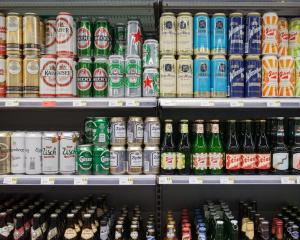About 2400 lives a year could be saved by slapping a 20 per cent tax our saltiest, fattiest foods and by cutting the price of fruit and vegetables with a 20 per cent subsidy.
The system of penalties and rewards would swing purchasing towards healthier options, gradually leading to a healthier population, say researchers from the universities of Auckland, Otago and Oxford, who estimated the likely effects on New Zealand death rates.
Based on Statistics NZ data for major food groups, they modelled the effects of a 20 per cent price increase or decrease on quantities purchased and subsequent deaths rates from heart attack, stroke, diabetes and diet related cancers.
The biggest effect for an individual nutrient - a 6.8 per cent reduction in overall mortality - was from a 20 per cent price bump in food groups that are important contributors to our salt intake - bread and breakfast cereals; processed meat; sauces and condiments; beef, lamb hogget and poultry; and takeaway food and drink.
This was followed by a 5 per cent mortality reduction from a 20 per cent hike in the price of the food groups that contributed at least 5 per cent to saturated fat intakes.
Slicing 20 per cent off fruit and vegetables made death rates dip 1.9 per cent - but when added to the salt and fat taxes, the life-saving power swelled to 8.1 per cent.
A 20 per cent tax on the major food groups that contribute to greenhouse gas emissions produced a 4 per cent mortality reduction.
A sugar tax was not modelled because the available data relating price and purchasing changes was considered unsound.
The study, published today in the journal PLOS ONE, also predicted several perverse outcomes.
"The sodium [salt] tax would reduce sodium but would also result in a small increase in saturated fat purchases and a small decrease in vegetable purchases," said one of the authors, Professor Cliona Ni Murchu, of Auckland University, "but there was still a net benefit."
They studied food groups because this was the data most readily available but this lumped healthier options, such as low-fat milk, in with full-fat versions.
But if the Government adopted the study's tax-and-subsidy scheme, Professor Ni Murchu said it would need to discriminate between healthy and unhealthy products within a group.
"If you are serious about tackling obesity and unhealthy diets it is clear that price is a good lever for change," she said.
The journal paper said: "Previous studies found that taxes on unhealthy foods and beverages would be cost-saving and considerably more cost-effective than individually-focussed weight reduction programmes or community or school-based education programmes.
A spokeswoman for Health Minister Jonathan Coleman, whose Government has repeatedly ruled out fat and sugar taxes, said he would not comment until the current "work programme in this area" was complete.
Food and Grocery Council chief executive Katherine Rich said computer modelling was far from the complexities of people's purchasing decisions and supermarkets' pricing and promotions strategies.
"I don't think using the New Zealand tax system to subsidise brussels sprouts by 20 per cent will make people eat more of them, or any vegetable for that matter."
Pricing for better health
Salt tax: 2000 lives saved a year - 20% tax on bread, breakfast cereals, processed meat, sauces, fresh beef, lamb, hogget, poultry and takeaway food
Saturated fat tax: 1500 lives - 20% tax on butter, cakes, biscuits, cheese, cream, pies, pizza, fresh beef, lamb and processed meat
Fruit and vegetables subsidy: 560 lives - 20% subsidy on fresh, dried, canned and frozen fruit and vegetables
Greenhouse gas tax: 1200 lives - 20% tax on fresh beef, lamb, hogget, poultry, processed meat, cheese, cream, milk, yoghurt, eggs and icecream
- By Martin Johnston of the New Zealand Herald













